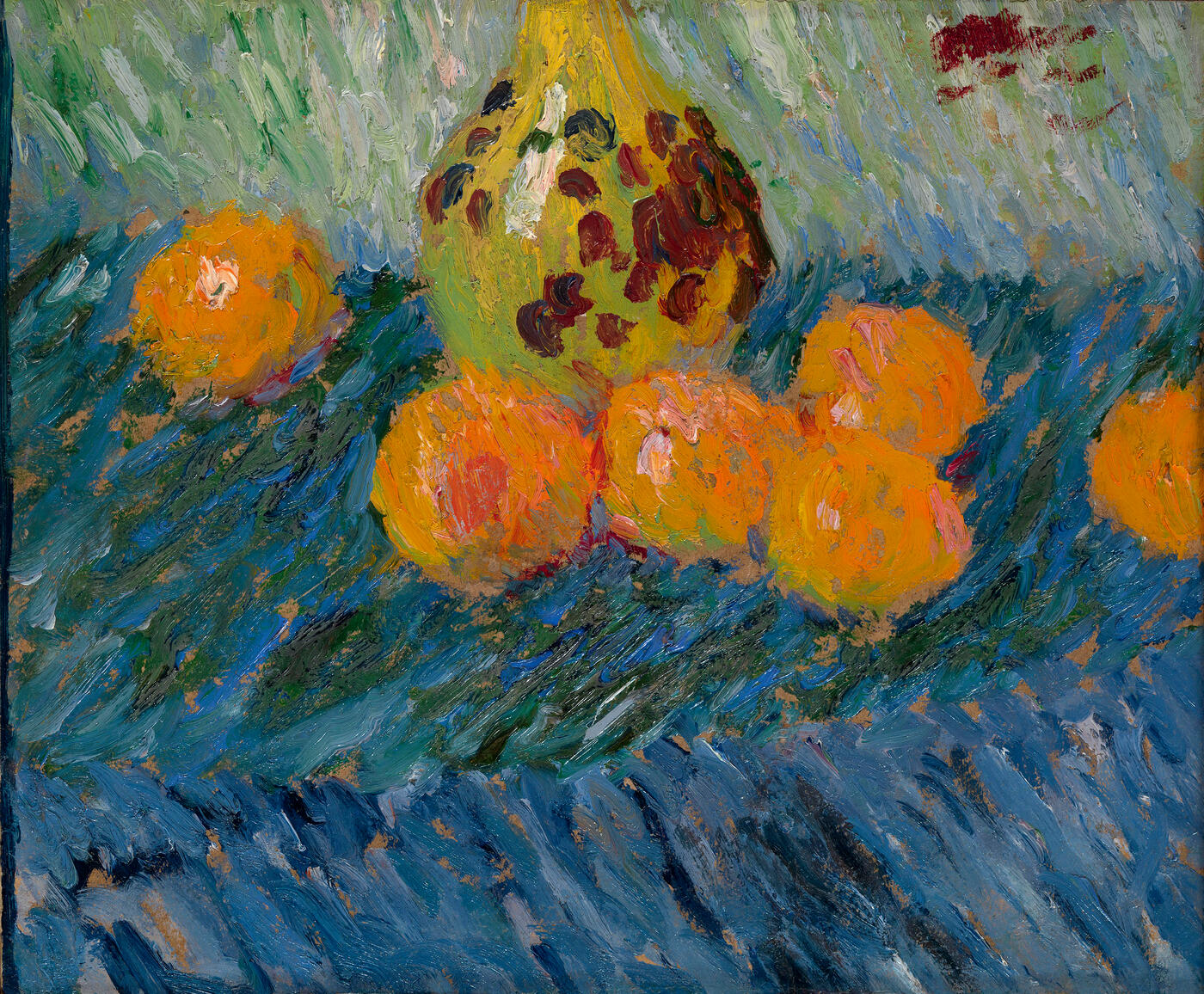MacDougall's Russian Art Auctions 27-30 May 2012
27 May 2012

* 6. JAWLENSKY, ALEXEJ VON (1864-1941)
Stillleben mit Orangen (Still Life with Oranges) .
Oil on cardboard, laid on panel, 31 by 37.5 cm.
350,000–500,000 GBP
Provenance: The artist’s studio.
Dom Willibrord Verkade.
Gift to Karl Caspar.
Crane Kalman Gallery, London.
Sotheby’s London, 6 December 1961, Lot 184.
O’Hana Gallery, London.
La Motte Gallery, Geneva, 1963.
Anonymous sale; Impressionist and Modern Art, Part II, Sotheby’s London, 28 November 1995, Lot 248.
Private collection, Europe.
Exhibited: Jawlensky, The Redfern Gallery, London, 5–28 October 1960, No. 31 (label on the reverse).
Literature: Exhibition catalogue, Jawlensky, London, 1960, No. 31, listed.
M. Jawlensky, L. Pieroni-Jawlensky and A. Jawlensky, Alexej von Jawlensky. Catalogue Raisonné of the Oil Paintings, London, 1991, vol. I, p. 67, No. 43, illustrated in black and white.
Painted around 1902, Stillleben mit Orangen is a rare early work by Jawlensky which testifies to his life-long preoccupation with colour. For Jawlensky, colour was a means of expression in its own right and it was in still lifes that he could best experiment with it. He later said of these earlier works: “I was never satisfied with what I painted. I now started painting still lifes without any particular direction, mostly fruit, always trying to bring harmony to my work. Of course it was not my own language as yet but some
of these paintings were very beautiful… For me it was never enough, though, and I kept on trying with stronger and stronger colours to find a harmonious tone, eventually producing one or two works which really did satisfy me.”
The beginning of the 20th century marks a turning point in Jawlensky’s oeuvre. His training at the Imperial Academy of Arts in St Petersburg and later with Anton Ažbe had refined his gifts, but it was
now, exposed to the work of other artists and engaging with new artistic trends, that Jawlensky’s work entered a new phase. The still lifes he painted around 1902 show the influence of Vincent van Gogh, clearly visible in the brushwork of the present lot, with its short and broadly applied dabs of paint. Even
more significantly, his palette underwent radical changes, laying the basis for his later work. He abandoned the darker tones of his earlier paintings and embraced the bright and strong colours for which the artist is celebrated today as one of the foremost colourists of the 20th century.
It appears that Stillleben mit Orangen was of special significance to Jawlensky. He kept it in his studio until 1908, before giving it to Karl Casper, another painter based in Munich. In 1907, Jawlensky had met the Nabi painter and monk Jan (Willibrord) Verkade, from whom he learned about Gauguin’s ideas. During
his stay in Munich, Verkade often painted in Jawlenky’s studio and the two artists became close friends. Sometime in 1907 or 1908, Verkade painted a nude on the reverse of Jawlensky’s Stillleben mit Orangen,
and the two artists then gave the double-sided painting as a gift to Caspar, their mutual friend. It remained in his collection for several decades before the two works were separated in the 1950s.
Notes on symbols:
* Indicates 5% Import Duty Charge applies.
Ω Indicates 20% Import Duty Charge applies.
§ Indicates Artist's Resale Right applies.
† Indicates Standard VAT scheme applies, and the rate of 20% VAT will be charged on both hammer price and premium.